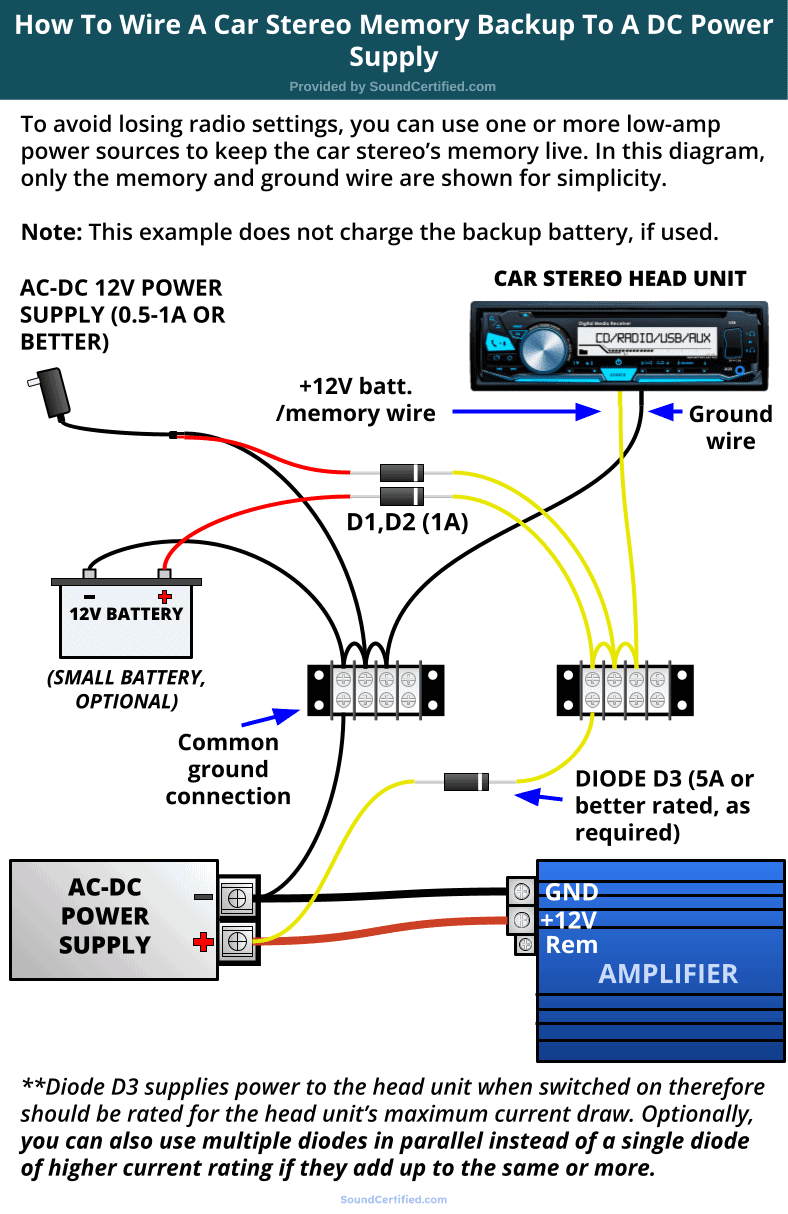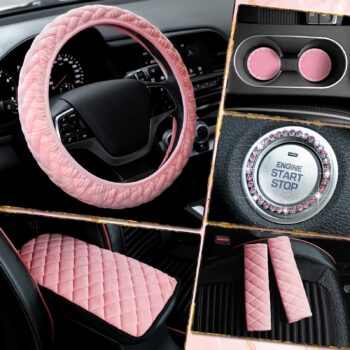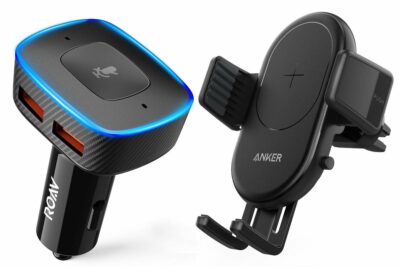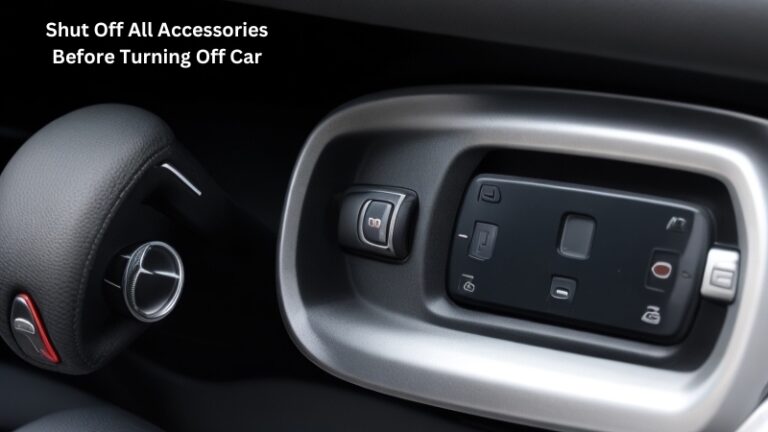How Much Current Runs Through A Car Accessory Wire
Have you ever wondered how much current runs through a car accessory wire? Well, buckle up because we’re about to dive into this electrifying topic! 🚗⚡️
When it comes to the electrical systems in our cars, there’s more going on than meets the eye. Those wires running through your vehicle are responsible for powering various accessories like headlights, radios, and even charging ports. But have you ever thought about how much current is flowing through those wires? Let’s find out!
In this guide, we’ll explore the fascinating world of car electrical systems and uncover the secrets behind the current that runs through those accessory wires. So, put on your thinking cap and get ready for an electrifying adventure! Let’s hit the road and discover the current that powers our favorite car gadgets. ⚡️💡

How Much Current Runs Through a Car Accessory Wire: Explained
Car accessories have become an essential part of our lives, making our driving experience more enjoyable and convenient. From dash cams to phone chargers, these accessories rely on the electrical system of our vehicles to function properly. But have you ever wondered how much current runs through a car accessory wire? In this article, we will explore the topic in depth, providing you with detailed information about the current flow in car accessory wires.
Understanding Current Flow in Car Accessory Wires
When it comes to car accessory wires, the amount of current flowing through them is determined by the specific accessory connected and its power requirements. Each car accessory has its own power consumption, measured in amps (Amperes). The ampere rating indicates the amount of electrical current the accessory requires to operate.
Car accessory wires are typically designed to handle a specific current load. Different wire sizes have different ampere ratings, and it is crucial to select the appropriate wire gauge for the accessory you are connecting. Using a wire that cannot handle the required current can lead to overheating, damaging the wire insulation or even causing a fire hazard.
Wire Gauges and Current Capacity
The wire gauge refers to the thickness or diameter of the wire. Thicker wires have a larger diameter and can handle higher current loads. In automotive applications, wire gauges are typically represented by American Wire Gauge (AWG) numbers.
Here are some common wire gauges used in car accessory wiring and their associated ampere ratings:
1. 18 AWG: This is a thin wire commonly used for low-power accessories such as LED lights or small fans. It can handle currents up to 7 amps.
2. 16 AWG: Slightly thicker than 18 AWG, this wire can handle currents up to 10 amps. It is suitable for medium-power accessories like car audio amplifiers or phone chargers.
3. 14 AWG: A versatile wire size, 14 AWG can handle currents up to 15 amps. It is commonly used for various car accessories that fall within this current range.
4. 12 AWG: Thicker than 14 AWG, 12 AWG wires can handle currents up to 20 amps. They are commonly used for more power-hungry accessories like high-power amplifiers or electric cooling fans.
It is essential to consult the manufacturer’s specifications or a professional electrician to ensure the correct wire gauge is chosen for your specific accessory. Using an undersized wire can lead to voltage drops and potential damage to both the accessory and the vehicle’s electrical system.
The Importance of Proper Wiring for Car Accessories
Proper wiring for car accessories is critical for several reasons. Firstly, using the correct wire gauge ensures that the accessory receives the required current to operate efficiently and safely. Undersized wires can result in voltage drops, leading to reduced performance or even malfunctioning of the accessory.
Furthermore, using the appropriate wire gauge minimizes the risk of overheating and electrical hazards. Wires with insufficient current-carrying capacity can overheat, melt their insulation, and potentially cause a fire. It is crucial to prioritize safety by using the correct wire size and ensuring proper installation.
Additionally, proper wiring prevents excessive strain on the vehicle’s electrical system. Each car has a specific electrical load capacity, and overloading it with high-current accessories can lead to system failures, such as blown fuses or damaged components. Distributing the electrical load across multiple circuits and using the correct wire gauge for each accessory helps maintain a stable and reliable electrical system.
In conclusion, understanding how much current runs through a car accessory wire is essential for the proper installation and operation of car accessories. By selecting the appropriate wire gauge and ensuring proper wiring practices, you can enjoy your car accessories while maintaining safety and optimal performance.
Tips for Wiring Car Accessories Safely
Wiring car accessories can be a DIY project for many car enthusiasts. However, it is essential to follow safety guidelines to ensure proper installation and prevent electrical hazards. Here are some tips for wiring car accessories safely:
1. Choose the Right Wire Gauge
As discussed earlier, selecting the correct wire gauge is crucial for the safe operation of car accessories. Refer to the manufacturer’s specifications or consult a professional electrician to ensure the wire size matches the power requirements of the accessory.
2. Use Proper Connectors
Using high-quality connectors that are specifically designed for automotive use is essential for maintaining a secure and reliable electrical connection. Avoid using household or low-quality connectors, as they may result in poor connections or increased resistance, leading to voltage drops and potential overheating.
3. Protect Wires with Conduit
To prevent damage to the wires, especially in areas where they are exposed or vulnerable to abrasion, consider using conduit or wire loom to provide additional protection. This can help minimize the risk of short circuits or wire insulation damage.
4. Secure Wires Properly
Ensure that the wires are properly secured and routed away from moving parts, sharp edges, or hot components. This helps prevent wire damage due to friction, vibration, or heat.
5. Fuse the Circuit
To protect the accessory, wiring, and vehicle’s electrical system, always include a fuse or circuit breaker in the circuit. Properly sized fuses help prevent excessive current flow and minimize the risk of damage or fire in the event of a short circuit.
By following these tips, you can confidently wire car accessories and enjoy their benefits while ensuring safety and reliability. Remember that if you are unsure or uncomfortable with the wiring process, it is always best to seek assistance from a professional electrician to ensure a safe and proper installation.
Key Takeaways: How much current runs through a car accessory wire
- Car accessory wires carry electrical current to power various devices in a car.
- The amount of current running through a car accessory wire depends on the power requirements of the device connected.
- Common car accessories like phone chargers typically draw around 1-2 amps of current.
- High-powered devices like car amplifiers may draw much higher currents, ranging from 10-100 amps.
- It is important to ensure that the car’s electrical system and wire gauge can handle the current requirements of the accessories to avoid overheating or electrical issues.
Frequently Asked Questions
Welcome to our Frequently Asked Questions section about car accessory wire current. Here, we’ll answer some common queries related to the amount of current that runs through car accessory wires.
1. Why is it important to know how much current runs through a car accessory wire?
Car accessory wires are responsible for powering various devices in your vehicle, such as radios, GPS systems, and phone chargers. It’s important to know the amount of current running through these wires to ensure they can handle the load and prevent any electrical issues. If the current is too high, it can overload the wire and potentially cause damage or even a fire.
Knowing the current rating of a car accessory wire can help you choose the right wire for your device. It will ensure that the wire can handle the amount of power required and prevent any safety hazards. So, understanding the current running through a car accessory wire is crucial for the proper functioning and safety of your vehicle.
2. How can I determine the current rating for a car accessory wire?
To determine the current rating for a car accessory wire, you can refer to the wire’s specification sheet or consult with the manufacturer. These specifications typically provide the maximum current the wire can carry safely. It’s important to choose a wire with a current rating that exceeds or matches the requirements of the device you are connecting to it.
Additionally, you can use an ammeter, a device that measures electric current, to measure the current running through a car accessory wire. By connecting the ammeter in series with the wire, you can observe the current flow. However, be cautious when dealing with live electrical circuits and consider seeking professional help if you’re unsure.
3. Can car accessory wires handle different amounts of current?
Yes, car accessory wires can handle different amounts of current depending on their gauge or thickness. Thicker wires have a lower gauge number and can carry more current compared to thinner wires with a higher gauge number. It’s essential to choose the appropriate wire gauge for your specific needs to ensure it can handle the required current without overheating.
Most car accessory wires are designed to support the average electrical demands of common accessories. However, if you plan to install devices with higher power requirements, such as amplifiers or high-wattage lights, it’s advisable to use thicker wires with lower gauge numbers to accommodate the increased current flow.
4. Can exceeding the current rating of a car accessory wire cause damage?
Exceeding the current rating of a car accessory wire can lead to several issues, including overheating, wire damage, and potentially even a fire. When the current exceeds the wire’s capacity, the wire may heat up due to the increased resistance, which can cause insulation to melt or burn. This can result in a short circuit or electrical fire.
Moreover, exceeding the current rating can also damage the connected device, as it may not receive the required power to function properly. This can lead to malfunctions or even permanent damage. Therefore, it’s important to always choose a wire with a current rating that matches or exceeds the electrical requirements of your devices to prevent any potential hazards.
5. Are there any safety precautions I should take when working with car accessory wires?
When working with car accessory wires, it’s crucial to prioritize safety. Here are a few precautions to keep in mind:
– Always disconnect the vehicle’s battery before working on any electrical components to prevent electrical shocks or short circuits.
– Use appropriate wire connectors and ensure all connections are secure and properly insulated to avoid loose connections or potential electrical faults.
– Avoid running wires near areas that generate heat or moving parts to prevent damage or wire wear over time.
– If you’re unsure about your wiring skills or need assistance, consult a professional automotive electrician to guarantee a safe and reliable installation.
By following these safety precautions, you can minimize the risk of electrical hazards and ensure the proper functioning of your car accessory wires and connected devices.
How to hardwire 12 volt car accessory without cigarette plug
Summary
So, here’s what you need to know about how much current runs through a car accessory wire.
When you plug something into your car, like a phone charger or a GPS, the wire that connects it to the car’s electrical system carries a certain amount of electrical current. This current depends on the power of the accessory and the wire’s resistance. It’s important not to exceed the wire’s current rating to avoid overheating or damage. You can usually find this rating in your car’s manual or by doing some research. Remember, safety first!






